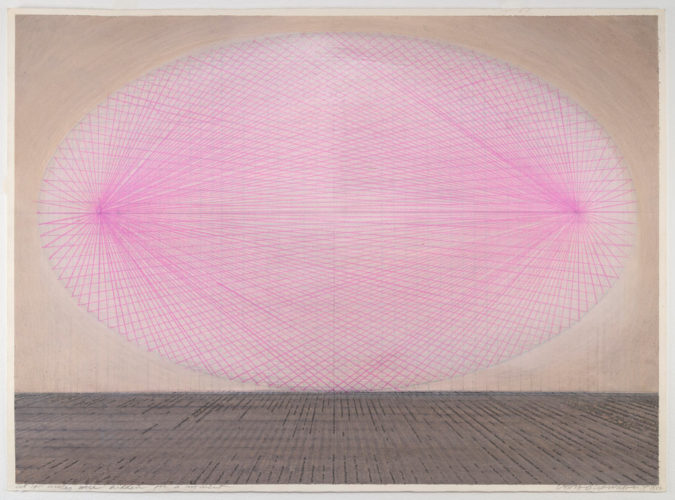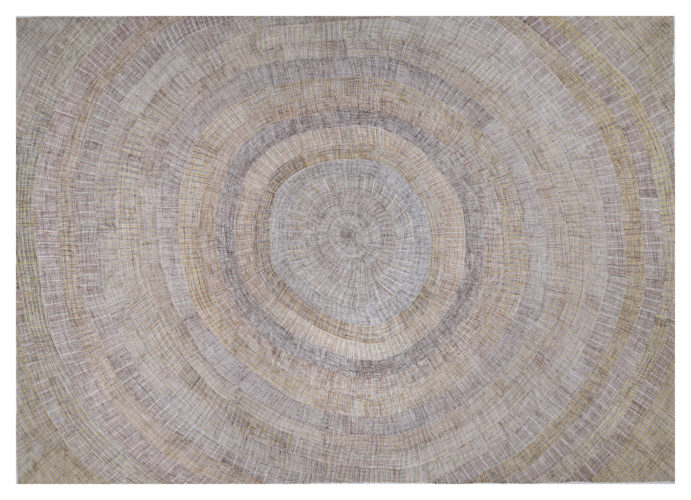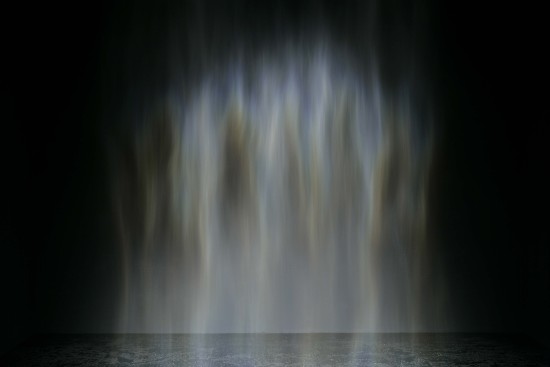
Olafur Eliasson, Beauty, 1993. Spotlight, water, nozzles and hose, dimensions variable. Collection of the Museum of Contemporary Art, Los Angeles. Purchased with funds provided by Paul Frankel. Installation view at Hara Museum of Contemporary Art, Tokyo. Image courtesy of the artist, Tanya Bonakdar Gallery, New York and neugerriemschneider, Berlin. © Olafur Eliasson. Photo: Jens Ziehe
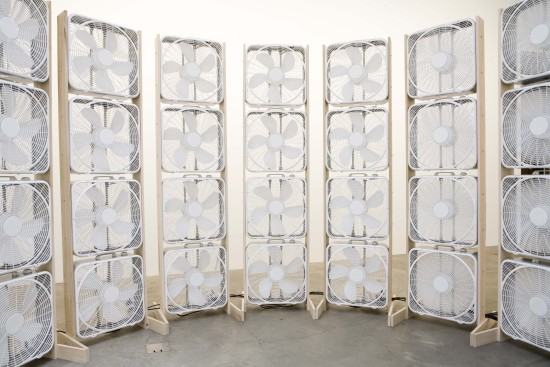
Spencer Finch, 2 hours, 2 minutes, 2 seconds (Wind at Walden Pond, March 12, 2007), 2007. 44 fans, wood and computerized dimmer board, 93 inches tall, 14 feet in diameter. Collection of Cifo-Cisneros Fontanals Art Foundation. Image courtesy of the artist and Lisson Gallery, London. © Spencer Finch
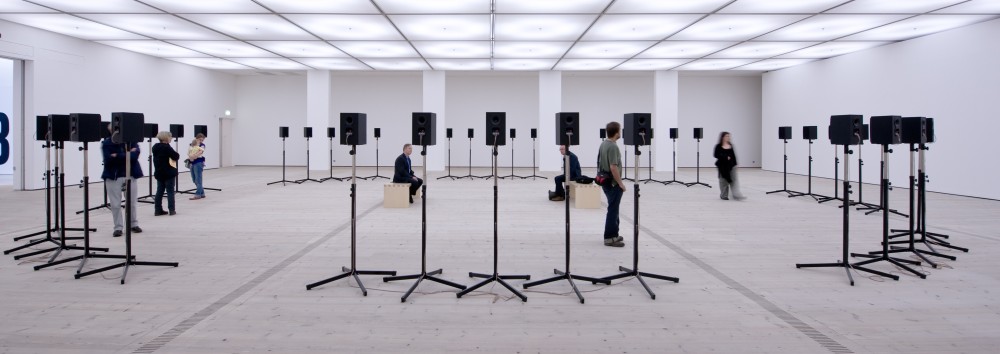
Janet Cardiff, The Forty Part Motet, 2001. Reworking of “Spem in Alium Nunquam habui” (1575) by Thomas Tallis; 40-track sound recording (14:00 minutes), 40 speakers. Collection of the Museum of Modern Art, New York. Gift of Jo Carole and Ronald S. Lauder in memory of Rolf Hoffmann, 2002. Image courtesy of the artist and BALTIC Centre for Contemporary Art, Gateshead, UK. © Janet Cardiff. Photo: Colin Davison
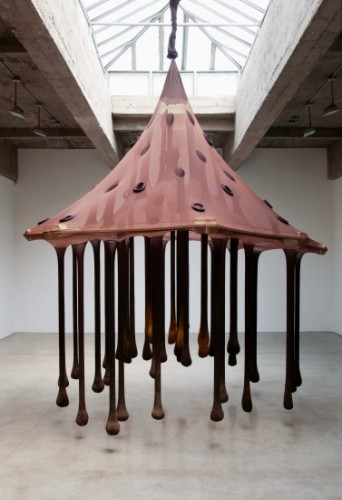
Ernesto Neto, Cai Cai Marrom, 2007. Polyamide, wood, turmeric, pepper and cinnamon, 196 ¾ × 118 × 118 inches. Collection Pérez Art Museum Miami, museum purchase with funds from the PAMM Collectors Council. Image courtesy of the artist and Tanya Bonakdar Gallery, New York. © Ernesto Neto. Photo: Jean Vong
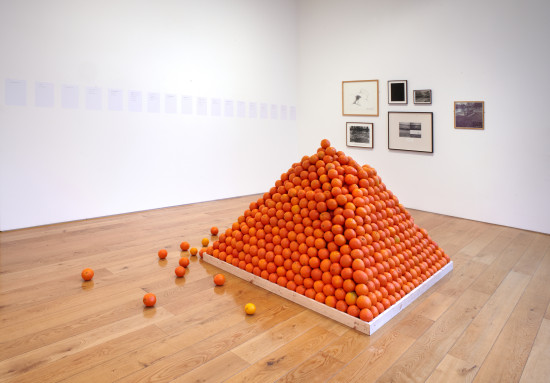
Roelof Louw, Soul City (Pyramid of Oranges), 1967. 6,000 oranges, dimensions variable. Courtesy of the artist and Richard Saltoun, London. © Roelof Louw
Janet Cardiff, Olafur Eliasson, Spencer Finch, Roelof Louw and Ernesto Neto
The Five Senses: Janet Cardiff, Olafur Eliasson, Spencer Finch, Roelof Louw and Ernesto Neto
The Five Senses begins with a simple premise: five senses, five works of art. However, as with many perceptual, cognitive and phenomenological questions, a more complex web of interrelationships emerges under closer examination. It is natural to assume one will see, or even hear art in a contemporary art space; it is more challenging to imagine […]
Feb 1 - May 4, 2014
The Five Senses begins with a simple premise: five senses, five works of art. However, as with many perceptual, cognitive and phenomenological questions, a more complex web of interrelationships emerges under closer examination. It is natural to assume one will see, or even hear art in a contemporary art space; it is more challenging to imagine smelling, tasting or touching objects at a museum. More importantly, despite their clear distinctions, the senses remain inextricable—one cannot experience any one of them independently.
The imaginative sculptures in this exhibition activate the body and mind, crossing boundaries and dodging museum conventions. Spencer Finch’s careful synchronization of electric fans, 2 hours, 2 minutes, 2 seconds (Wind at Walden Pond, March 12, 2007) melds the unexpected, visceral thrill of wind to the romance of Henry David Thoreau’s cherished nature and creates a liminal space between nature and technology, body and mind. Beauty, an installation by Olafur Eliasson, constructs an experience of sensory contrasts—shifts between darkness and light, warm and cool, dry and damp—that amplify the spectacular visual experience of standing amidst water and a beautiful spectrum of fractured light. The stretched, sagging, globular forms of Ernesto Neto’s spice-filled structures infuse the gallery in rich scents and incite awareness of the architecture around the sculpture. Roelof Louw’s colorful pyramid of 6,000 ripe oranges perched atop one another invite the visitor to choose a piece of fruit—enabling one to taste, see, smell and feel. In Janet Cardiff’s audio installation, The Forty Part Motet, the haunting tones of a 40-voice choral composition from the 16th century drift between the same number of speakers, each projecting an individual choral singer.
As these impressive artworks demonstrate, prescribing one’s rich sensory perception to five simple categories is naive. Our awareness of space, time, light, sound, taste and touch is intimately personal and much richer than audition, taste, touch, sight and smell. Janet Cardiff, Olafur Eliasson, Spencer Finch, Roelof Louw and Ernesto Neto’s forthright works inspire a sense of awe and wonderment in the most simple of acts.

